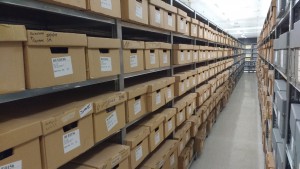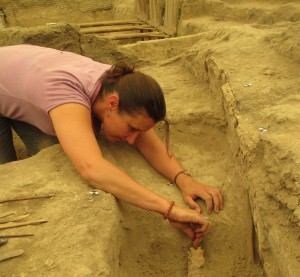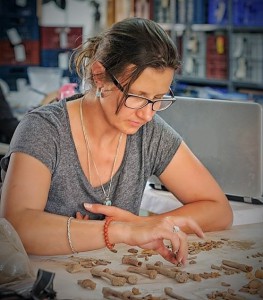Like many people, I’ve always been interested in the past and how people lived their lives. Historical accounts that have survived through time can tell us so much about what life was like, but they also have their limitations. One aspect that frustrated me was that these accounts didn’t really get close enough to the person behind the image, which was what I actually wanted to know about. So it seemed like a good idea to go directly to the people themselves for this level of information.
I have read some wonderful archaeological reports on excavated sites that provide incredible details on the buildings, pottery, stone, glass, preserved grains, animal and human bones. They allow the reader to really get to grips with what was going on at the location in the past. The physical aspects of the people who died and were buried at an excavated location can be determined through analysis giving us detail about demography (age and sex) and pathology (dental health, arthritis, injury). This information is vastly different to historical accounts in terms of the level of detail and in providing direct access to specific individuals.
The human skeleton is a record in bone of that person’s physical life experience. All of the detailed information that can be gathered from analysing a skeleton can be reconstructed to give us a very personal knowledge of one individual. We can understand aspects of their early childhood and movement through life, diseases and trauma they suffered from, and possibly survived, activities they undertook, and even if they were left- or right-handed. This is essentially what I do through my research. I focus on a specific group of individuals, the youngest ones. They are a very special group because their skeletons give me information about two individuals; themselves and their mothers.
In the UK, if excavated human remains are not reburied, they are stored securely according to the regulations for the treatment of human remains. Any analysis and research must follow ethical requirements and be carried out by trained individuals. A large part of my research time is spent working in secure-access locations with lots of boxes of bones. Occasionally I have the opportunity to excavate the remains on site, which is hard work but fun. Most recently my fieldwork has been in a very hot, dry environment, so it’s certainly a change of scenery from basement storage areas!


As an osteoarchaeologist, I’m normally only involved in excavation where burials are concerned. This means that I can ensure that the remains are being dealt with correctly and that nothing is overlooked. On a busy site, my role is to advise and oversee the exposure (uncovering) of burials. Once the remains are visible I then complete the excavation of the skeleton. After a skeleton is lifted, it is gently cleaned, labelled and stored. Then it is possible for the remains to be analysed in detail. Occasionally, there are multiple burials with mixing up of the bones. This means that there is a long process after cleaning of separating the individuals; much like a big, complex puzzle with lots of tiny pieces.

Analysing a skeleton allows me to understand specific impacts that an individual experienced before their death and how this affected their life. Looking at the context of their burial lets me see how the other people around them responded to their death. The combination of these two factors is about as close as we can currently get to ‘knowing’ past individuals. Other specialists can provide further details on where these past people grew up, their diet, and perhaps how they looked. Knowing about the end of their lives and how their community reacted to their death tells us something else, something that cannot be easily measured. It can reveal that they were important in their community, regardless of age or sex, or status. It can re-write our interpretations of how past people thought about each other, and where they drew distinctions.
As interesting as this line of work is, it’s important to remember that all of the information we gain from studying past people comes with a catch; every interpretation we make is informed by our own reality. It is impossible to separate our own experience from what we think about someone else’s. The best we can do is get close to finding these lost people amongst all the evidence, and giving them back a voice. This is one of the goals that I strive to achieve through my work.
Belinda Tibbetts is a PhD Candidate in the Archaeology Department at the University of Exeter.
